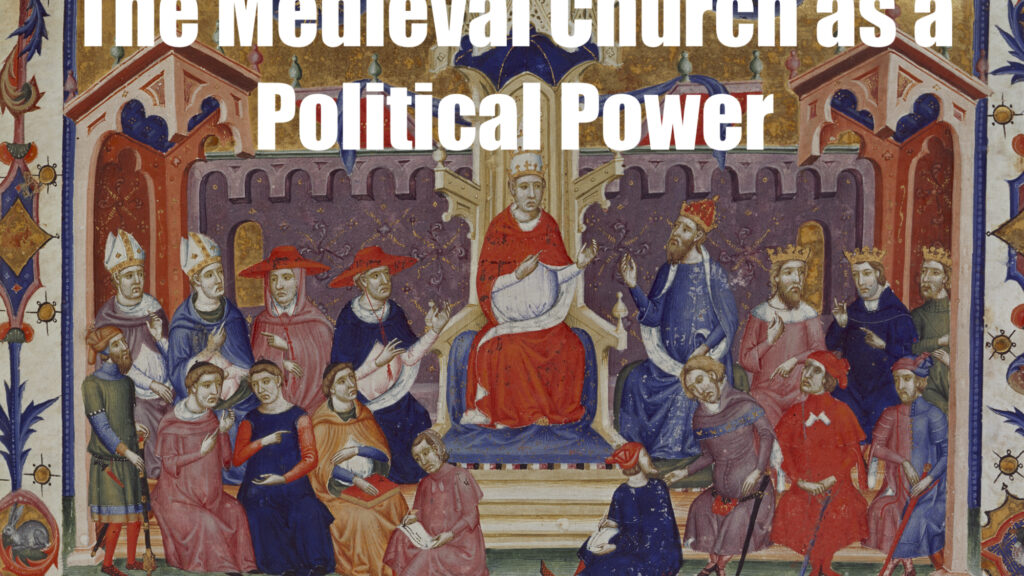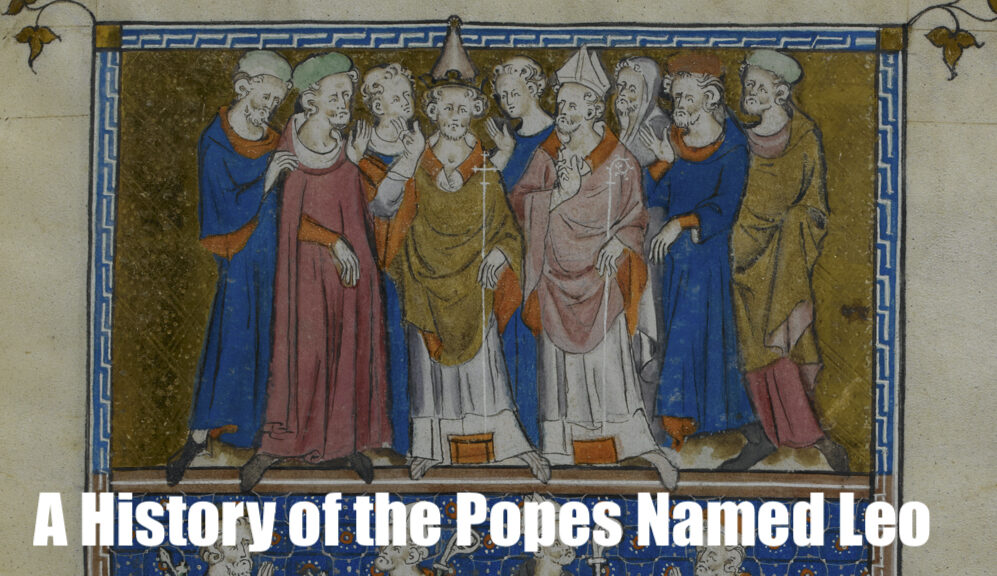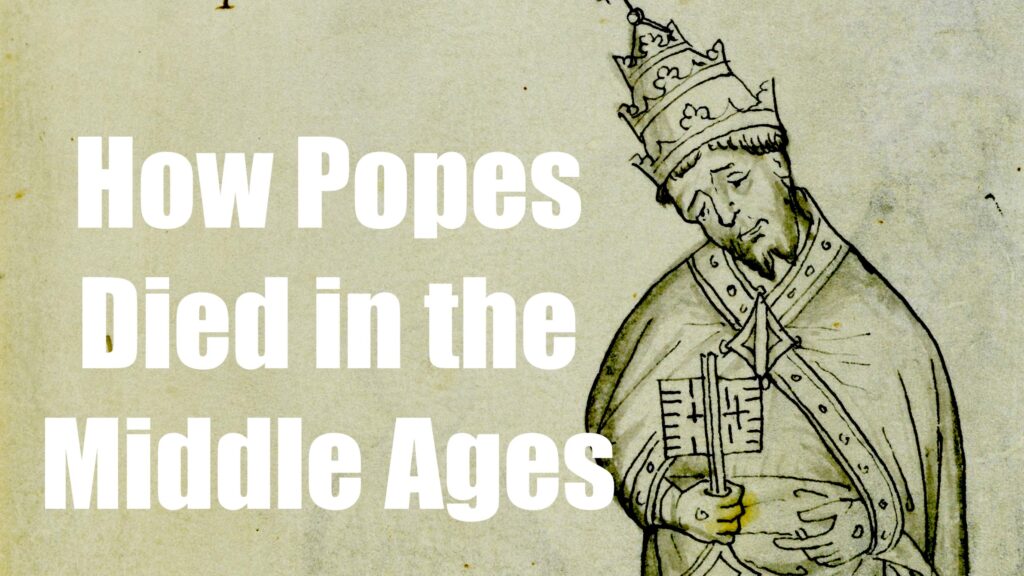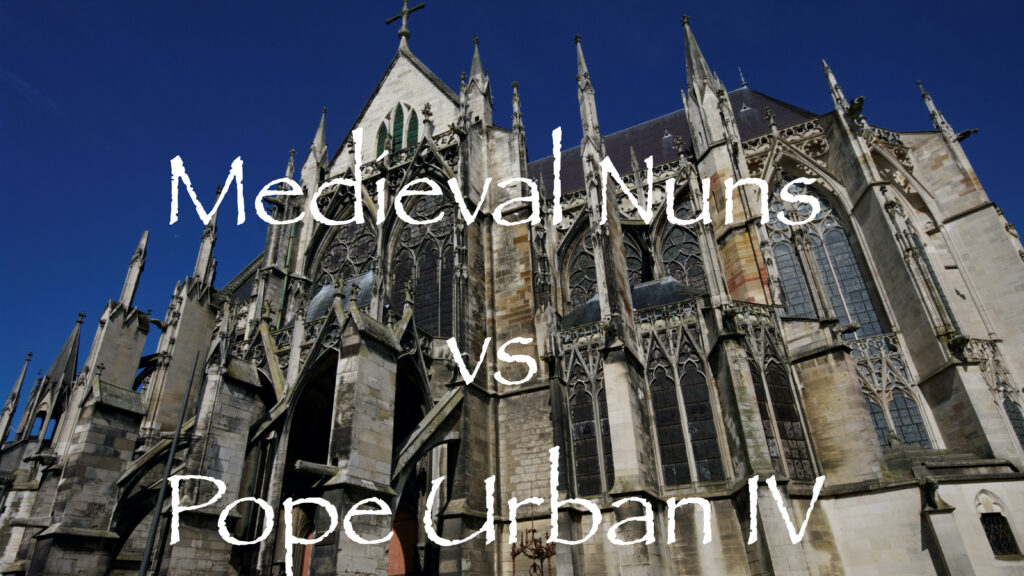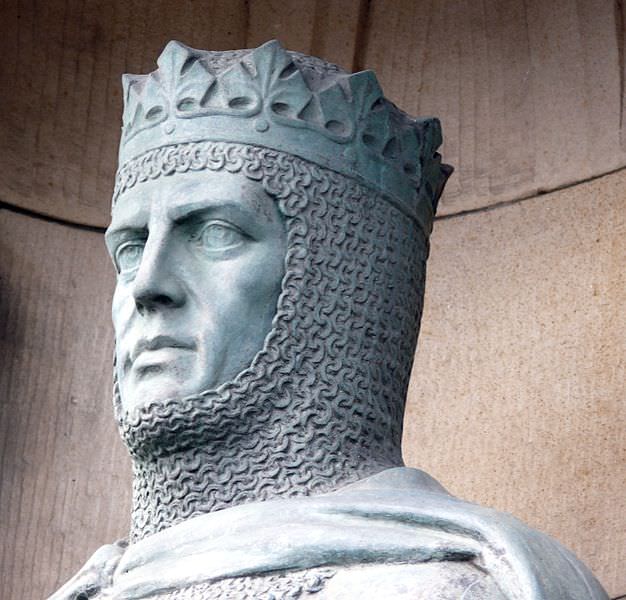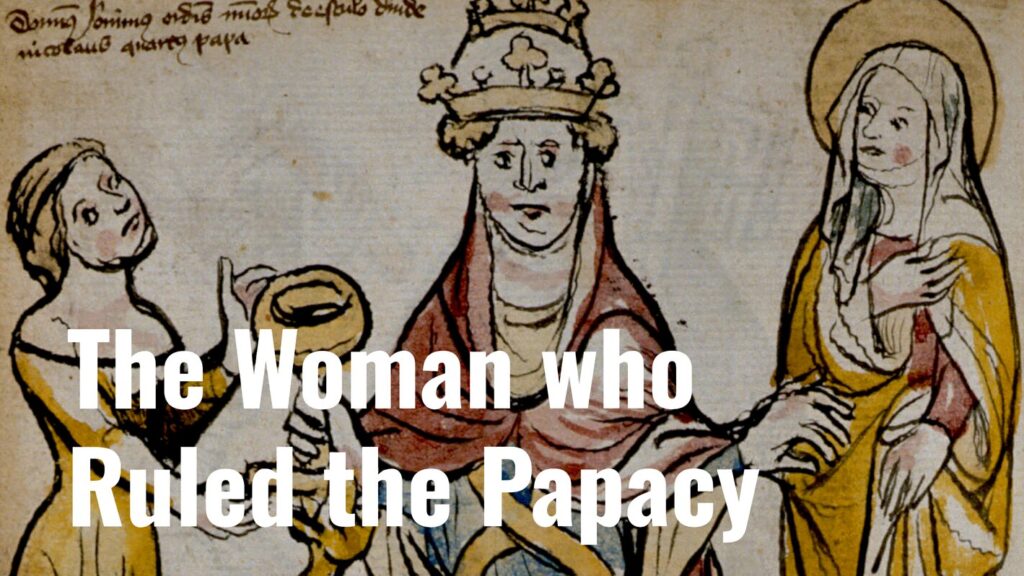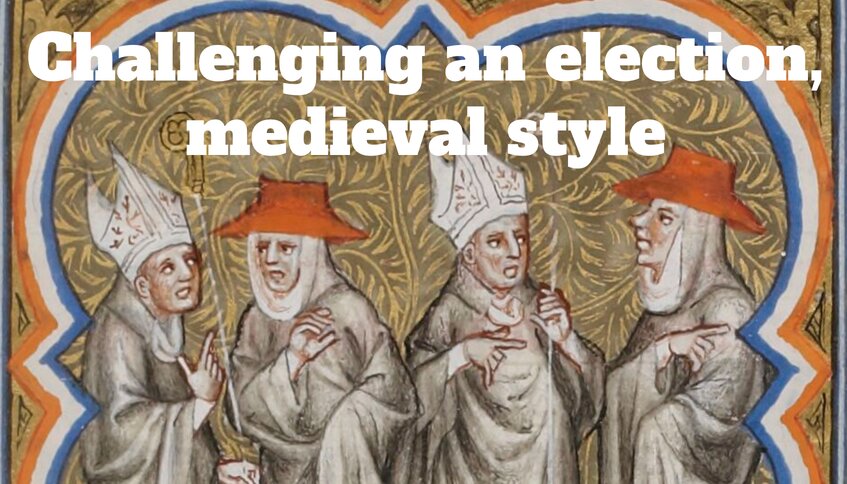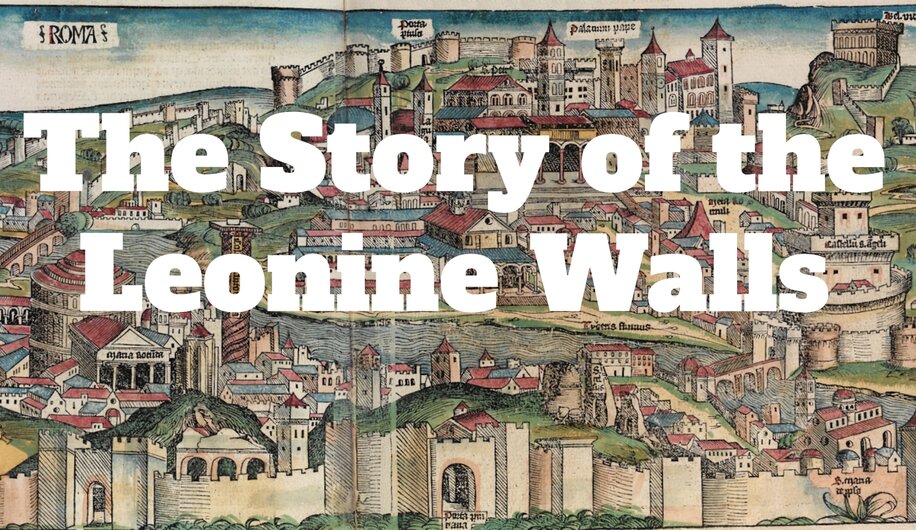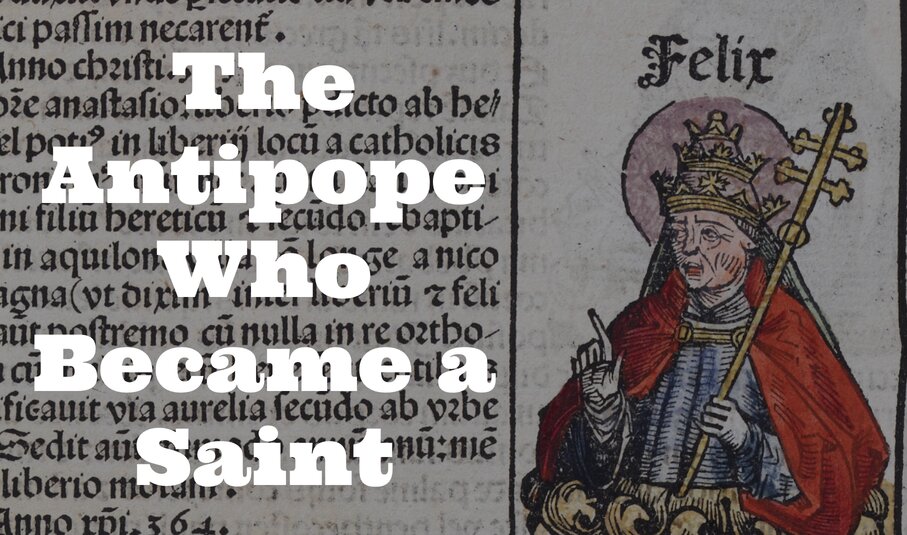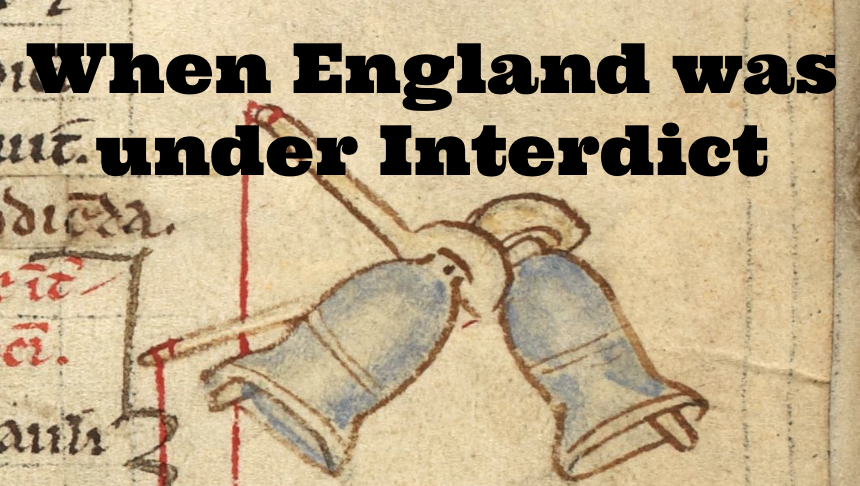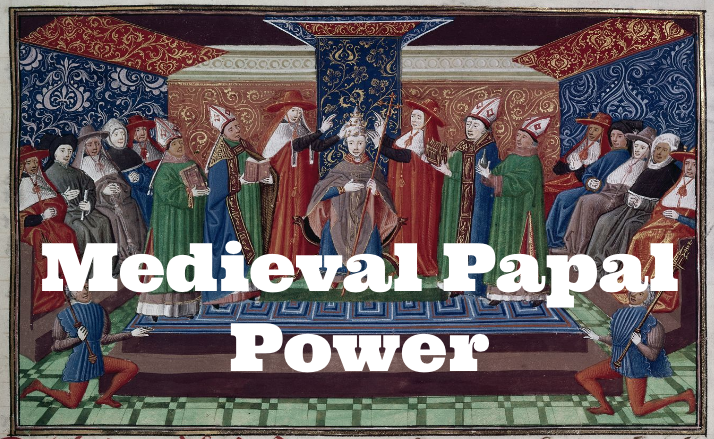The Medieval Church as a Political Power
Discover how the medieval Church operated as a political power—ruling territories, collecting taxes, and challenging kings across Latin Christendom.
A History of the Popes Named Leo
From Leo I to the newly elected Leo XIV, this article explores the long and complex history of popes who chose the name Leo—revealing how each shaped the Catholic Church through reform, conflict, and legacy.
How Popes Died in the Middle Ages: Ritual, Power, and Performance
What happened when a pope died in the Middle Ages? Behind the closed doors of Rome and Avignon, elaborate rituals unfolded—blending faith, politics, and performance to preserve the illusion that the Church never died.
When Medieval Nuns Stopped a Papal Construction Site: The Turbulent Story of the Basilica of Saint-Urbain in Troyes
Discover the dramatic story of how a powerful abbess and her nuns defied the papacy and halted the construction of a major Gothic basilica in 13th-century Troyes, France.
The Cadaver Synod: The Trial of a Dead Pope
In 897, Pope Stephen VI exhumed his predecessor and put him on trial. Known as the Cadaver Synod, this bizarre episode in Church history was more than madness—new research reveals it was a political and religious power play.
Top 10 Antipopes
Discover the stories of ten historical figures who claimed the papacy but were later declared antipopes. From Hippolytus of Rome to Felix V, explore the rivalries, scandals, and political power struggles that shaped medieval Church history.
The Evolution of Papal Authority: Plenitudo Potestatis and Sovereignty in Medieval Canon Law
How did medieval canon law shape the idea of absolute papal authority? This article traces the evolution of key legal concepts—plenitudo potestatis, potestas absoluta, and pro ratione voluntas—from Pope Innocent III to Hostiensis, revealing their lasting impact on theories of sovereignty.
New Medieval Books: The Roman Curia
How is the Papacy structured? This book delves into the intricate government and administration of the Papacy and Vatican City, tracing many of its foundational elements back to their medieval origins.
Medieval Papal Palace Discovered?
Archaeologists working in Rome have uncovered a series of medieval structures beneath Piazza San Giovanni in Laterano. They believe it might be a Papal residence dating between the 9th and 13th centuries.
Rome and the Papacy with Jessica Wärnberg
He’s one of the most powerful figures in all of Western history, with influence not only over life and death, but over the immortal souls of billions of people over thousands of years. This week on The Medieval Podcast, Danièle speaks with Jessica Wärnberg about the role of the pope, his influence on Rome, and what happens when the holiest of men isn’t quite so holy.
New Medieval Books: Rome and the Invention of the Papacy
A look at how the Papacy in Rome developed in the Early Middle Ages through the Liber pontificalis, a series of biographies of popes. This text is crucial to understanding how the Papacy came to dominate the Christian religion in Western Europe.
Changing his tune: Robert Bruce, Ireland, and the Papacy
Robert Bruce had been on a mission for over a decade by 1318, intent on forcing a peace treaty out of England acknowledging Scottish independence and his own rights as king.
New Medieval Books: City of Echoes
This book intertwines the history of Rome and the history of the Papacy, to show how each influenced the other and the legacy they created together.
The Woman who Ruled the Papacy
The Papacy is a very male-dominated institution. However, for several years it was a woman who held true power over the Popes in Rome.
“Stop the Steal!”: Challenging an election, medieval style
Today, the United States and other democratic countries are dealing with fundamental challenges to their electoral systems. Can events from the year 1378 give us some insights into what is a ‘legitimate’ election?
The Story of the Leonine Walls
The urban wall that once enclosed St. Peter’s Basilica and its neighborhood is one of the best-preserved monuments of medieval Rome, but seldom gets the love it deserves.
“Hell itself was a more beautiful sight to behold”: The Sack of Rome in 1527
The tragic and terrible events that led to the Sack of Rome in 1527.
The Antipope Who Became a Saint: Forgery, Heresy, and the Power of Manuscripts
By Riccardo Macchioro In today’s world, people are pretty much accustomed to the concepts of “fake news” and “propaganda” (albeit, we might say,…
Canossa, 1077: Emperor vs Pope, with Blair Apgar
When it came to power in medieval Europe, much of it rested in the hands of kings and popes. But what happened when they decided not to share it? This week on The Medieval Podcast Danièle speaks with Blair Apgar about the dramatic clash of emperor versus pope at Canossa in 1077.
Anastasius the Librarian, the greatest enemy of Byzantium you probably haven’t heard of, with Réka Forrai
Meet Anastasius the Librarian, one of the most fascinating controversialists of the ninth century. A native of Rome, scholar of Greek, and (probably) anti-pope for all of three days, he was no friend of Byzantium. He disliked and mistrusted “the Greeks” and argued that they were not Romans as they thought. His arguments have held sway in the west ever since.
When England was under Interdict
Under King John’s rule, England was placed under papal interdict for over six years.
Medieval Geopolitics: Striking Back against the Empire: Per venerabilem
‘The king in his kingdom is the emperor of his kingdom.’
Medieval Geopolitics: A Full-Fledged Theory of Medieval Papal Power
Hostiensis argued that the pope did not govern by divine mandate; rather he governed as a divine agent.
Medieval Geopolitics: The Evolution of Positive Law
In this column I trace the next stage in the evolution of the ideas first laid out Innocent’s influential decretal, focusing in particular on the writings of the canonist Laurentius Hispanus.
Medieval Geopolitics: How a Pope shares in the divine power of God
At the end of the twelfth century, Pope Innocent III issued a document known as the Quanto personam. What kind of influence did it have on ideas about sovereignty and power in the medieval era?
